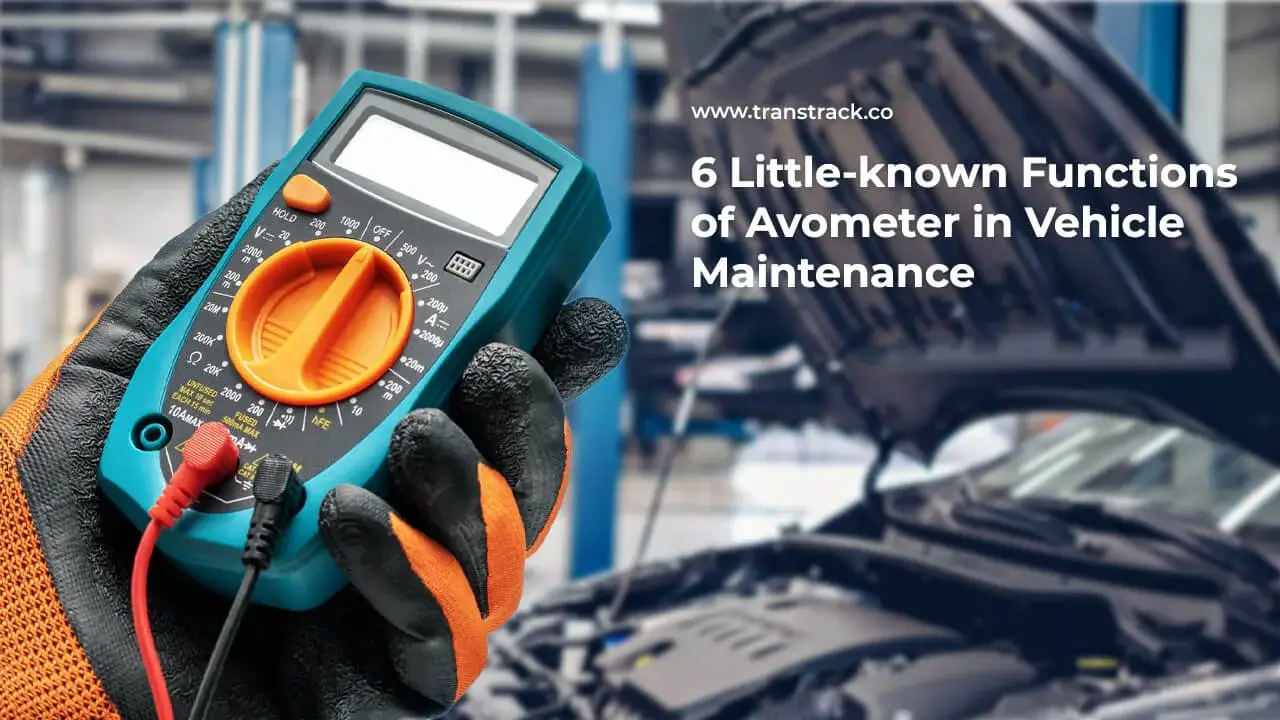6 Little-known Functions of Avometer in Vehicle Maintenance

There are various tools that are very important for vehicle maintenance and repair. One tool that is often used is the avometer. The function of avometer in the automotive world is quite important. This tool is often used by automotive technicians to measure various components related to the electrical system in a vehicle.
Also known as a multimeter, an avometer is an electronic measuring device that is useful for measuring various electrical parameters, including voltage, current, and resistance. With the help of an avometer, automotive technicians can take various measurements required to efficiently inspect and repair electrical systemsand electronic devices on vehicles.
In this article, TransTRACK will introduce you to what avometer functions are, its types, and the components that make it so valuable in the automotive world.
Avometer Function
Avometer is one of the important devices used in the automotive world to measure various electrical and electronic parameters. Based on its name, avometer is a combination of three measuring instruments, namely Ampere-Volt-Ohm Meter. Based on these three tools, the avometer has the following functions:
Current Measurement (Ammeter)
The Ammeter function allows users to measure the electric current flowing through a circuit. This is important for assessing how much current load a component or circuit is handling.
Voltage Measurement (Voltmeter)
Next there is a Voltmeter, this tool is used to measure the voltage in the circuit. This voltage measurement allows the user to determine if the voltage is exactly where it is intended to be.
Resistance Measurement (Ohmmeter)
Avometer also functions as an Ohmmeter, which is used to measure the resistance or resistance in a component or circuit. This helps in troubleshooting and replacement of faulty components.
In addition to the above functions, the avometer also has other functions in vehicle maintenance. Here is the list:
Continuity Testing
The next avometer function is for continuity testing. This test refers to the ability of electricity to flow through a line or cable. By testing continuity, technicians can determine if there are any broken connections or damaged wires, which could be the cause of electrical problems in the vehicle.
Capacitance Measurement
Some avometers have the ability to measure the capacitance of electronic components such as condensers. This avometer function is useful in the repair and maintenance of certain components, such as electronic ignition systems or cooling systems.
Frequency Measurement
Digital avometers are often equipped with the ability to measure the frequency of electrical signals. Frequency measurement is quite an important function of avometers in the maintenance of vehicle charging and ignition systems that require signal frequency monitoring.
Types of Avometers
There are two main types of avometers commonly used in the automotive world, namely analog avometers and digital avometers. Here is the full explanation:
Digital Avometer (Digital Multimeter)
Digital avometers are the most commonly used today. This type has an easy-to-read digital display and offers various additional features such as automatic measurement and automatic detection of circuit types. Digital avometers are easy to use and suitable for a variety of vehicle maintenance tasks.
Digital avometers tend to have a higher level of precision compared to analog avometers. They are often used in measurements that require high accuracy. Some digital avometers also have various additional functions, such as capacitance, frequency, or temperature measurement.
Analog Avometer (Analog Multimeter)
Although less commonly used, analog avometers still have a place in the automotive world. This type uses an analog needle to show the measurement results. It requires a little more knowledge and experience to properly operate an analog avometer.
Analog avometers usually require less battery power or even no battery at all. In addition, analog avometers often provide a faster response to changes in measurement values compared to digital avometers.
Avometer Parts
To understand how to use an avometer, it is important to recognize its parts. Here is an explanation of the main parts of the Avometer:
Screen
The screen on the avometer is where the measurement results are displayed. This screen is usually an LCD or LED that displays numbers. On analog avometers, this is usually replaced by a needle.
Function Selector
This is a dial or button that allows the user to select the appropriate function for the measurement to be taken. Functions commonly found on the Avometer include voltage (voltmeter), current (ammeter), and resistance (ohmmeter) measurements.
Measurement Terminals
The measurement terminal consists of two parts, namely the positive terminal (colored red) and the negative terminal (colored black). These terminals are used to connect the Avometer to the circuit or component to be measured.
Range Selector
The range selector is a section that allows the user to select the appropriate measurement range. Each range has certain limitations, for example, for voltage measurement, the options are between 20V, 200V, or 1000V.
Hold Button
The “Hold” button allows the user to lock the measurement results. This is useful when you want to record the measurement results that appear on the display. By pressing the “Hold” button, the displayed value will remain on the screen even after the measurement terminal is removed.
Power Button
The power button is used to turn the Avometer on or off. On digital Avometers, it can also serve to change the unit of measurement, such as from volts to millivolts.
In the automotive world, an avometer is a very important tool for vehicle maintenance and repair. With a good understanding of what an avometer is, its functions, and its main parts, you can use this tool properly and safely to help keep your vehicle in its best condition.
To make the vehicle maintenance process easier, you can consider using TransTRACK’s latest technology, the Vehicle Maintenance System (VMS). VMS is a system designed to effectively and efficiently manage and monitor vehicle maintenance. The system can be used for various types of vehicles, including private cars, commercial vehicle fleets, construction vehicles and more. VMS utilizes various technologies to monitor vehicle performance, plan maintenance, and optimize maintenance.
Adopting Vehicle Maintenance System technology, allows you to maximize vehicle efficiency and safety, reduce downtime, and save long-term maintenance costs. With continuous monitoring of vehicle conditions, timely maintenance planning, and optimization of the maintenance process, you will have a longer lifespan for your vehicle.
So, contact TransTRACK immediately and don’t hesitate to apply VMS technology to your vehicle!
Topic





